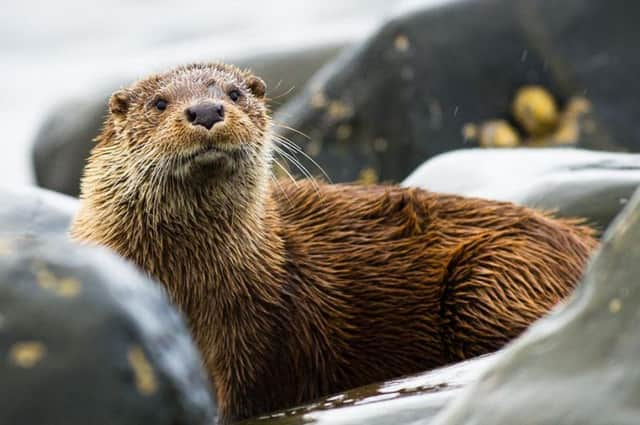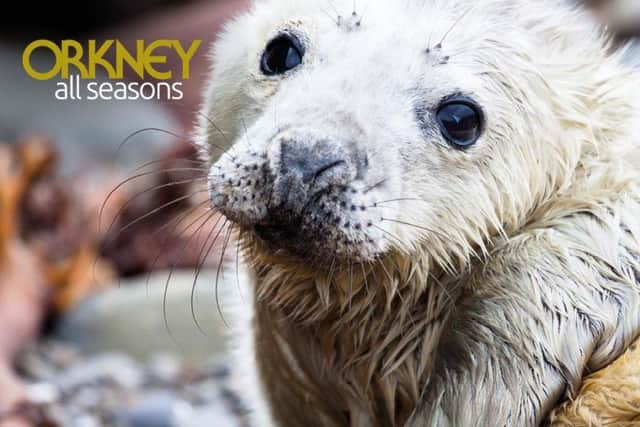Six of the best places for wildlife spotting in Orkney


Come spring, the island is exhibiting the best of its natural wonders with its 600 miles of coastline, crystal clear waters, lush meadows and moorland bursting with life.
Get ready to experience the sight of thousands of soaring seabirds, inquisitive otters, beautiful puffins, seals and orcas, as well as many rare breeds, who make this pure, magical landscape home.
Download the new Orkney Wildlife Trail produced by Destination Orkney in partnership with RSPB Scotland >>


1. Brodgar
Wildlife watchers can start their tour at Brodgar, home to the magnificent Neolithic Ring of Brodgar stone circle - and a modern-day habitat for wildlife.
Expect to hear the magical chorus of birdsong at this ancient site, where the distinctive “bubbling” call of the curlew and the “drumming” of the snipe add to these wonderful surrounds. Look above, and you will see skylarks performing their stunning vertical displays.
At Brodgar, widgeon and teal build their nests in the wet grasslands, while seals bask in the saltwater of Stenness Loch. You can see them on the rocks just a few metres from the road and, if you are lucky, an otter might pop up to say hello.


2. Marwick Head
From Ring of Brodgar, head north about 10 miles to Marwick Head, an RSPB nature reserve where one of Orkney’s most magnificent sea bird cities can be found.
After wintering out in the ocean, thousands of guillemots, razorbills and other seabirds return annually to these cliffs ahead of the breeding season.
Here, bright orange flashes of colour on the cliffside draw eyes to resting puffins. Fulmars soar gracefully between the ledges and gannets perform spectacular dives into the water.
Late spring offers the most impressive views of the colony as the seabird numbers reach their peak. Up to 25,000 birds can be found on the sandstone ledges of Marwick Head come early summer, with the route to the cliffs carpeted in a rich meadow of thrift, sea campion and other colourful flowers.
The reserve is also a fantastic site for spotting cetaceans - bottlenose dolphins, minke whales and porpoises are all regularly spotted from these shores.
If you catch a break in the waves out of the corner of your eye, grab your binoculars as quickly as possible - it may even be an orca.
3. The Loons
Just a couple of miles inland from the spectacle of Marwick Head is The Loons in Birsay, another RSPB reserve and the largest remaining wetland in Orkney.
Here, a listening wall amplifies the sounds made by the many visiting wading birds. Sit back and immerse yourself in a symphony of birdsong, offered courtesy of curlew and lapwing. Occasionally, the rare wickering call of the black-tailed godwit can be heard.
Sunrise is the perfect time to visit The Loons; experiencing the dawn chorus here is a memory that will be long cherished.
4. Cottascarth
From The Loons, venture across the west mainland to the hide at Cottascarth, named after local naturalist Eddie Balfour who conducted years of research into hen harriers on Orkney.
This reserve is one of the best places in the country for viewing these majestic birds of prey.
Spring sees the males take part in their spectacular courting displays, affectionately known as “skydancing”. With an elegant combination of dips, twists and rolls, this is one of nature’s most beguiling shows which is best seen in the morning or evening time.
Living alongside the hen harriers are ravens and stonechats with the unmistakable call of the cuckoo also carried in the air.
Follow the track to a vantage point which overlooks Rendall Moss, home to one of the densest populations of breeding curlew in Europe.
5. Hoy
The wildlife adventure continues from the mainland to the island of Hoy by ferry.
Hoy is one of Orkney’s most spectacular destinations, with the island’s high hills, sweeping moors and beautiful beaches creating a destination rich in beauty and natural wonder.
The nature reserve here also boasts the UK’s northernmost native woodland and its highest vertical sea cliff. Hoy offers a landscape like no other.
The cliffs at St John’s Head and the spectacular sea stack, the Old Man of Hoy, welcome thousands of seabirds from May onwards. Puffins build their burrows into the Old Man itself, while great skuas patrol the skies.
The cliffs are normally most active around sunset, when the parents-to-be return from a hard day of fishing.
Away from the sea, Orkney’s two highest peaks offer moorland which is decorated with a stunning array of flowers, including primroses and clovers. The post road between the hills is an excellent way to see the reserve passing close to Berriedale Wood and Sandy Loch.
Nevertheless, hard-wearing shoes and clothing are recommended for a trip to Hoy, where the trail through the reserve is rough in places.
A family of white-tailed eagles have made their home at Hoy and can be spotted high on the cliffs above the Dwarfie Stone, between Linksness and Rackwick Bay. From April onwards, RSPB volunteers are on hand to help you spot these majestic birds, which have returned to Orkney for the first time in 100 years.
6. North Hill
In the far north of the isles, Papa Westray’s North Hill RSPB reserve is exposed and wonderful, with crashing waves and howling winds serving up a taste of Orkney’s true wild side. However, hidden amongst this untamed landscape is one of Orkney’s most delicate natural treasures.
Primula Scotica - or Scottish Primrose - can only be found in a select few spots around Orkney and the north coast of Scotland. The tiny plant is less than one centimetre in diameter, so fauna followers are encouraged to get down on their hands and knees to search for this revered jewel of the isles, with May the best time to catch sight of the flower.
That month also sees the arrival of arctic terns, having completed their epic, 60,000-mile annual migration from pole to pole. Despite numbers dwindling in recent years, the North Hill reserve is still one of the best places in the UK to view the bird known as the “sea swallow”. But with skuas claiming their nesting sites about this time, and razorbills and guillemots settling on the cliffs, they are by no means the only ornithological attraction.
On a breezy day, the high winds are perfect for watching the elegant flight of fulmar. Down on the water, the rocky outcrops are perfect resting places for shags and guillemots. Watch for their characteristic pose, standing with their wings wide to dry them in the wind.
You’ll experience life in many forms by following the new Wildlife Trail of the Orkney archipelago, where birds, animals and flowers live large in this unique and wonderful island environment.